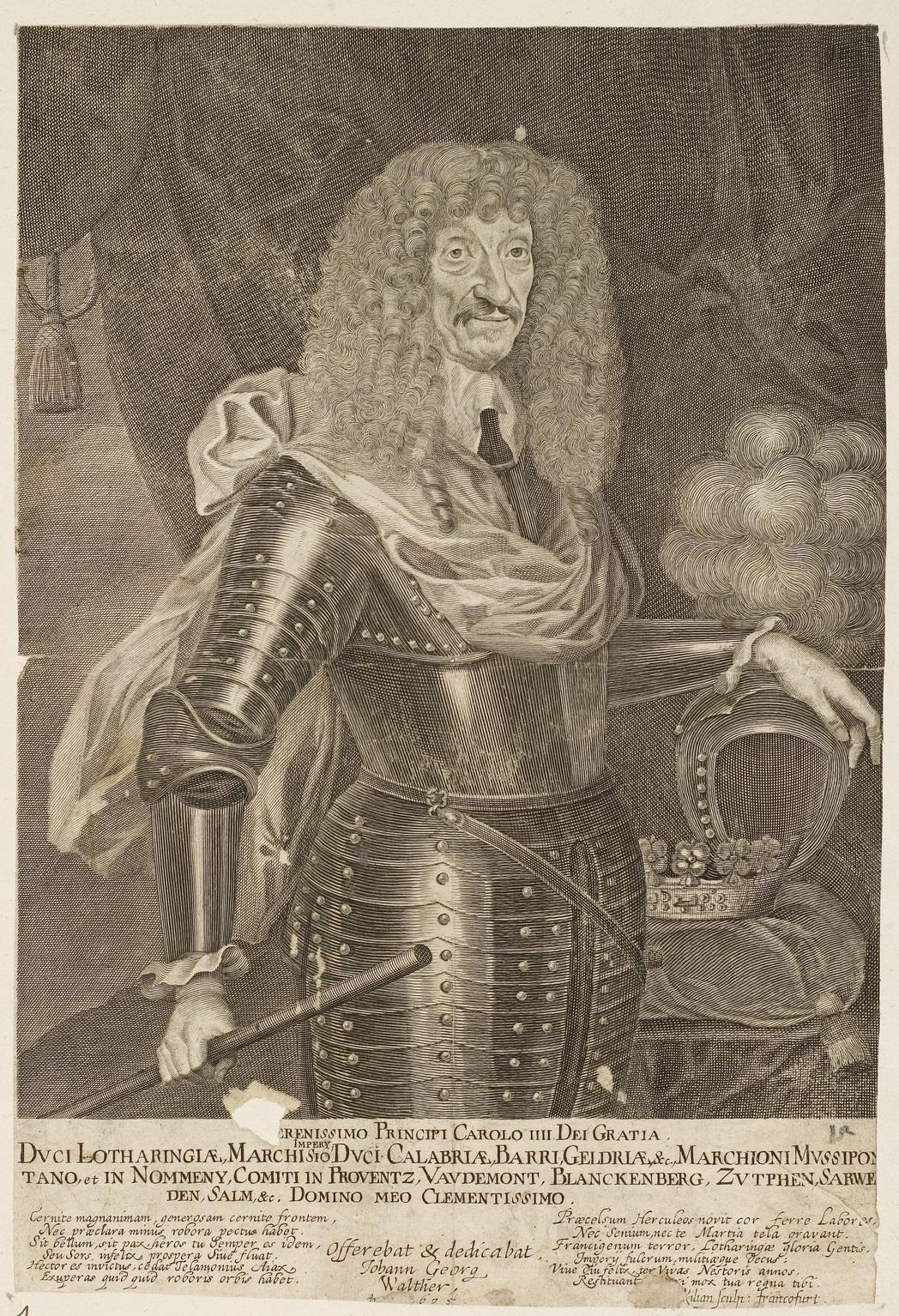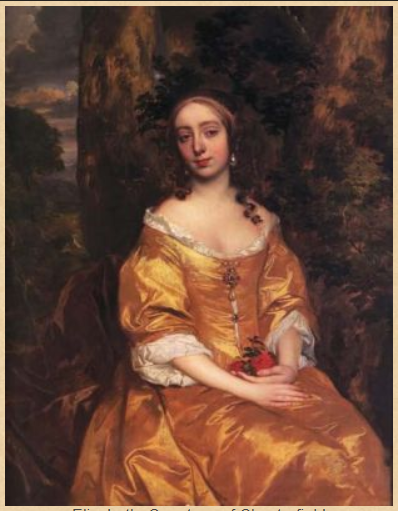 |
| Thibaut I of Lorraine @Wikipedia |
(1191-1220)
Duke of Lorraine
1213-1220
Son of: Ferry II de Lorraine & Agnes de Bar.
Husband of: Gertrud von Dachsburg (1190-1225), mar 1206, daughter & heiress of Albrecht II von Metz & Dagsburg
(1240-1302)
Husband of: Margarita de Navarra (d.1310), mar 1255, daughter of Teobaldo I de Navarra & Marguerite de Bourbon.
His lovers were:
Unnamed mistresses.
Natural offspring:
a. Jean de Lorraine (d.1295)
b. Colin (fl 1291)
c. Isabelle (fl 1291)
d. Marguerite (fl 1291)
 |
| Ferry IV of Lorraine @Wikipedia |
(1282-1329)
Duc de Lorraine
1312-1329
Son of: Thibaut II de Lorraine & Isabelle de Rumigny.
 |
| Elisabeth of Austria Duchess of Lorraine @Wikipedia |
Husband of: Elisabeth von Osterreich (d.1353)
His lover was:
Unnamed mistress.
Natural offspring:
a. Aubert, batard de Lorraine (d.1392/97), Seigneur d'Essey.
 |
| Raoul de Lorraine Duke of Lorraine @Wikipedia |
(1320-1346)
Duke of Lorraine
1329-1346
Husband of:
1. Eleonore de Bar (d.1333), mar 1329, daughter of Edoaurd I de Bar & Marie de Bourgogne
2. Marie de Chatillon (1323-1380), daughter of Gui I de Blois & Marguerite de Valois, Comtesse de Blois
His lover was:
Unnamed mistress.
Natural offspring:
a. Aubert, batard de Lorraine (fl. 1346/1406), Seigneur d'Essey, mar Comtesse de Preny.
Duc de Lorraine
1390-1431
Son of: Jean I de Lorraine & Sofie von Wurttemberg.
 |
| Margarethe of the Palatinate Duchess of Lorraine @Wikipedia |
Husband of Margarethe von Pfalz (1376-1434), mar 1393, daughter of Ruprecht I of Germany & Elisabeth von Nuremberg
His lover was:
Alison du May (1383-1431)
" . . . They arrived as far as Nancy; there the Duke of Lorraine was lying ill; he sent out an escort to bring her to him tidings about her had preceded her; indeed we may be sure that now the news of the 'inspired Maid' would ride fast and far. The Duke was in extremity, his country was troubled, his physicians failed to heal him; if Jeanne were a seer, she might be able to give him help; at any rate, he inquired of her whether he should be healed of his sickness. Jeanne frankly replied to him, she could not tell, but she boldly counselled him to do one thing. He had immured his good wife, Margaret of Bavaria, in a convent, and was living at Nancy with a young mistress, Alizon Dumay. Jeanne charged him to send away his mistress, and call home his good wife; and so far from being affronted with her, he gave her a present of money to help her on her journey, and shortly afterwards he did what she charged him to do. . . ." (The Eclectic Review: 187)
" . . . The state of his health worried him more than the condition of France. He was sixty-three and ill. He had taken as his mistress a young woman, Alison Dumay, the illegitimate daughter of a priest. He had had five children by her and was still infatuated by her. Ill and, by the standards of that age, a very old man, he was tormented by the thought that if he died unreconciled with his wife he would go to hell and equally tormented at the prospect of putting aside his mistress. He was determined to get well and sp postpone the day when he would have to reform his life and repent his sins." (St. Joan of Arc)
"Baudicourt hesitated to assume the responsibility of any action in the matter. He took Jeanne to see the old Duke of Lorraine, his feudal superior. Ducke Charles, at that time under the domination of a mistress, Alison du May, of great with and beauty, was ill, and thought the miraculous maiden of Domremy might restore him to health and the arms of Alison. Jeanne, very wisely and frankly, told him to put away his paramour and take back his wife and lead a decent life. She was not worker of vulgar miracles to profit a worn-out old roue." (Women of Medieval France)
Natural offspring:
" . . . The state of his health worried him more than the condition of France. He was sixty-three and ill. He had taken as his mistress a young woman, Alison Dumay, the illegitimate daughter of a priest. He had had five children by her and was still infatuated by her. Ill and, by the standards of that age, a very old man, he was tormented by the thought that if he died unreconciled with his wife he would go to hell and equally tormented at the prospect of putting aside his mistress. He was determined to get well and sp postpone the day when he would have to reform his life and repent his sins." (St. Joan of Arc)
"Baudicourt hesitated to assume the responsibility of any action in the matter. He took Jeanne to see the old Duke of Lorraine, his feudal superior. Ducke Charles, at that time under the domination of a mistress, Alison du May, of great with and beauty, was ill, and thought the miraculous maiden of Domremy might restore him to health and the arms of Alison. Jeanne, very wisely and frankly, told him to put away his paramour and take back his wife and lead a decent life. She was not worker of vulgar miracles to profit a worn-out old roue." (Women of Medieval France)
Natural offspring:
a. Ferry d'Einville, batard de Lorraine (d.1453/56)
Seigneur de Villacourt, Vaxoncourt, Pallegney & Zincourt
c. Ferry de Luneville, batard de Lorraine (d.1425)
d. Catherine, batarde de Lorraine (fl.1425)
e. Isabelle, batarde de Lorraine (d. 1457), mar 1425 Henri de Liocourt.
 |
| Rene of Anjou Duke of Lorraine @Wikipedia |
(1409-1480)
Duc de Lorraine
1431-1453
Duc de Bar
1420s-1480
Duc d'Anjou 1434-1480
Comte de Provence 1434-1480
King of Naples 1435-1442
 |
| Jean II of Lorraine Duke of Lorraine @Wikipedia |
(1426-1470)
Duc de Lorraine
1453-1470
Husband of: Marie de Bourbon (1428-1448), mar 1444, daughter of Charles I de Bourbon & Agnes de Bourgogne
His lovers were:
Natural offspring:
1. Jean batard de Calabria, Comte de Briey (c.1504)
2. Albert batard de Calabria, Seigneur d'Essey
3. Daughter married John of Scotland
4. Jeanne d'Abancourt, batard de Calabria, married Achille batard de Beauveau
5. Marguerite batarde de Calabria.
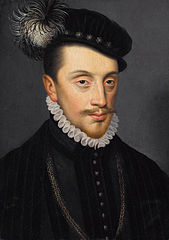 |
| Charles III of Lorraine Duke of Lorraine @Wikipedia |
(1543-1608)
Duke of Lorraine
Duke of Bar
1545-1608
Son of: Francois I de Lorraine & Christina af Danmark.
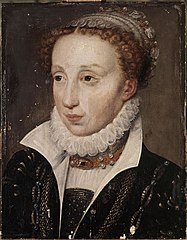 |
| Claude of France Duchess of Lorraine @Wikipedia |
Husband of: Claude de France (1547-1575), mar 1599, daughter of Henri II de France & Caterina de' Medici
His lover was:
Unnamed mistress.
Natural offspring:
a. Charles de Remoncourt (d.1648), Abbe de Luneville & Senones.
 |
| Henri II of Lorraine Duke of Lorraine @Wikipedia |
(1563-1624)
Husband of:
1. Catalina de Navarra (1559-1604), Duchesse d'Albret, Comtesse d'Armagnac, Comtesse de Perigord, mar 1599.
2. Margherita Gonzaga di Mantova (1591-1632), mar 1606.
Henry the Good.
"As with many other Dukes of Lorraine, we lack a serious portrait of a prince who acquired the nickname of le bon and who spent on almost anything except soldiers. Although his lack of legitimate sons created dynastic problems, it is noteworthy that Henri II supported two bastard sons; one of them, a Knight of Malta, collected sizable sums every year from the duke's treasury. Many of his other subjects were also well-treated. At one end of the scale, Henri's debonair generosity emerges with his liberal creations of nobility: in sixteen years, exceeding the annual average (8.1) from his father's long reign and far ahead of his miserly successor. At the other end, if his father fed the swans swimming in the moats around his capital, his son's generosity extended much further down the animal hierarchy; a servant was reimbursed for 'three dozen spoons put in various places to give th emice something to drink.'" (A Bewitched Duchy: Lorraine and Its Dukes, 1477-1736: 87)
A profligate heir.
"Henri II, who reputedly remarked that 'prodigality is the original sin of the house' and that 'French has only one word for refusal, but his nurse never taught it to him,' has a well-deserved reputation for extravagant expenditure. For example, he had a fishpond built around the garden fountain of his palace in 1618, and stocked it four different times with a total of almost a thousand truites. That year, their cost (337 francs) exceeded his payments to a troupe of touring comedians or his alms to a traveling Bulgarian patriarch and his vicar. That same year, he also paid a Normandy merchant 234 francs for fourteen Peruvian onions, Chinese flowers and seeds, and a rooster and hen from North Africa." (A Bewitched Duchy: Lorraine and Its Dukes, 1477-1736: 88)
 |
| Henri II de Lorraine by G. Garitan, 2014 @ Musee barrois |
His lovers were:
1) Catherine Mathis.
Natural offspring:
a. Claude Charles (b/d/1626).
2) Sara Veroussier.
Natural offspring:
a. Henri batard de Lorraine.
b. Claude batard de Lorraine (d.1631), Comte de Briey
3) Unnamed mistresses.
Natural offspring:
a. Henri de Bainville, Abbe de Saint-Mihiel, Abbe de Saint Pierremont, Abbe de Bouzonville (d.1626), Legitime 1605
b. Charles de Lorraine, Comte de Briey, Seigneur de Darney (d.1631), Chevalier de Bar, Chevalier de Lorraine
1. Nicole de Lorraine (1608-1657), Duchesse de Lorraine et Bat, 1624-1625 (in her own right), mar 1621, div 1635, daughter of Henri II de Lorraine & Margherita Gonzaga di Mantova
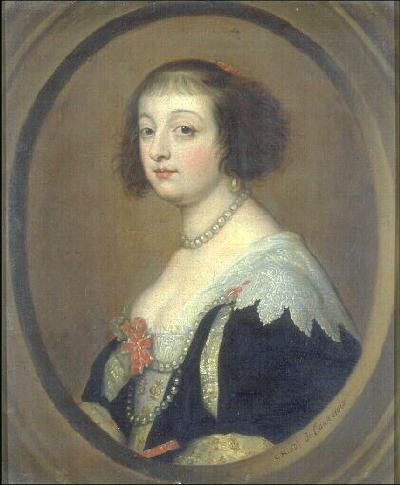 |
| Beatrice de Cusance @Wikipedia |
2. Béatrix de Cusance (1614-1663), mar 1637, Baronne de Belvoir, daughter of Claude-François de Cusance, Baron de Belvoir & de Saint-Julien & Ernestine van Witthem, Comtesse de Walhain and Vicomtesse de Sébourg
3. Marie-Louise d'Aspremont (1652-1692), mar 1665
His lovers were:

Béatrice de Cusance
Princesse de Cantecroix
1) Béatrice de Cusance, Princesse de Cantecroix (1614-1663)
French courtier & royal mistress.
Lover in 1634-1642.
" . . . Left a young, beautiful, and childless widow (1637), Beatrix became the mistress of Charles IV, duke of Lorraine (1604-1675), whose wife had retired from the court of Nancy. He persuaded Beatrix to through a form of bigamous marriage with him (1637) and requested an annulment of his childless marriage from Pope Urban VIII, but refused to leave Beatrix during the period pending judgement on the case. The couple separated after the birth of their son (1642), and Beatrix retired to the court of The Hague, in Holland. . . Returning to the court of Lorraine, the duke renewed his former attachment to Beatrix, and married her a second time a few days before her death at Nancy (June 5, 1663). Madame de Cantecroix left two children by Duke Charles, who were not regarded as legitimate, Anne de Lorraine (1639-1720) who married Francois de Lorraine, Prince de Lillebonne and was prominent at the court of Louis XIV, and Charles Henry de Lorraine, Comte de Vaudemont (1642-1773)" (A Bit of History)
Beatrice de Cusance's other lover was:
Charles Stuart.
Lover in 1659.
" . . . There (in Holland) she pursued a scandalous affair with the much younger Charles Stuart (II) (1659), which liaison was responsible for the breaking of his betrothal to Louisa Henrietta of Orange. . . ." (A Bit of History)
2) Catherine de Saint-Remy.
2) Catherine de Saint-Remy.
Natural offspring:
a. Karl Johann Lothar von Vequel (1633-1732), mar 1698 Anna Elisabeth von Lindenberg (1679-1749)
 |
| Isabelle de Ludres |
3) Isabelle de Ludres (1647-1726)
 |
| Leopold I of Lorraine Duke of Lorraine the Good @Wikipedia |
 |
| Elisabeth-Charlotte of Orleans Duchess of Lorraine @Wikipedia |
Husband of Elisabeth-Charlotte d'Orleans
His lover was:
 |
| Anne-Marguerite de Lignéville @Wikipedia |
Anne-Marguerite de Ligneville (1707-1798)
Princesse de Beauvau-Craon
Lover in 1706
Daughter of Marc de Beauvau, Prince of Craon, and Anne Marguerite de Ligniville
Wife of:
1. Jacques Henri of Lorraine, Prince of Lixheim (d. 1734), mar 1721
2. Gaston Pierre Charles de Lévis, Marshal de Mirepoix (d. 1757), mar 1739.
"The princess Craon was the favourite mistress of Leopold the last duke of Lorraine, who married her to monsieur de Beauvau, and prevailed on the emperor to make him a prince of the empire. They at this time resided at Florence, where prince Craon was at the head of the council of regency." (Walpole, Vol. 1: 72)
"Leopold's marital life was troubled in 1706, when he took Anne-Marguerite de Lignéville, Princess of Beauvau-Craon as his mistress, and enriched her family. Elisabeth Charlotte however, following her mother's advice, remained silent." (Wikipedia)
". . . Herr Wolfling is the eldest son of the late Grand Duke of Tuscany Ferdinand IV, cousin of the ill-fated Emperor Franz Joseph. From his ear . . .(???)

